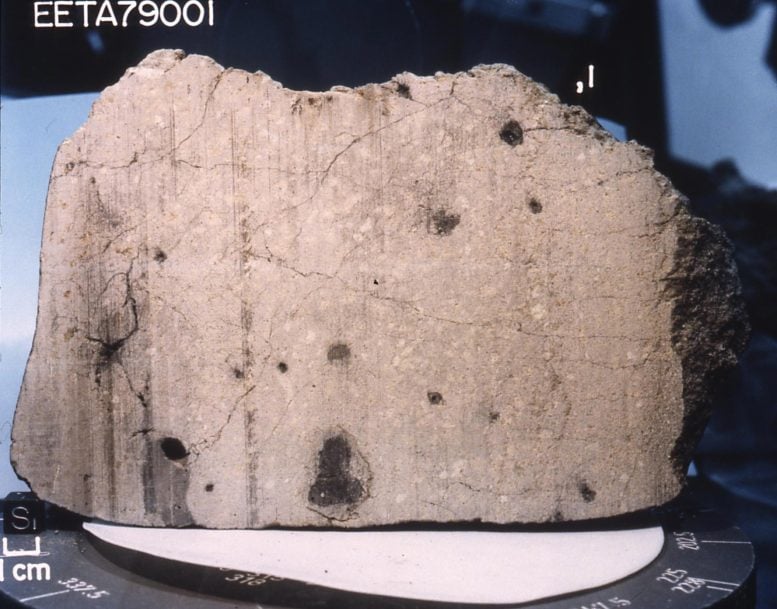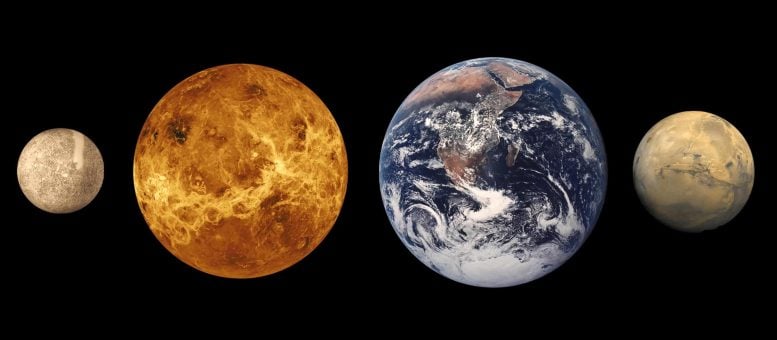International research team investigated the isotopic composition of rocky planets in the inner Solar System.
Earth and
The four terrestrial planets: Mercury, Venus, Earth and Mars. Credit: NASA/Lunar and Planetary Institute
Both theories are based on theoretical models and computer simulations aimed at reconstructing the conditions and dynamics in the early Solar System; both describe a possible path of planet formation. But which one is right? Which process actually took place? To answer these questions, in their current study researchers from the University of Münster (Germany), the Observatoire de la Cote d’Azur (France), the California Institute of Technology (USA), the Natural History Museum Berlin (Germany), and the Free University of Berlin (Germany) determined the exact composition of the rocky planets Earth and Mars.
“We wanted to find out whether the building blocks of Earth and Mars originated in the outer or inner Solar System,” says Dr. Christoph Burkhardt of the University of Münster, the study’s first author. To this end, the isotopes of the rare metals titanium, zirconium, and molybdenum found in minute traces in the outer, silicate-rich layers of both planets provide crucial clues. Isotopes are different varieties of the same element, which differ only in the weight of their atomic nucleus.
Meteorites as a reference
Scientists assume that in the early Solar System these and other metal isotopes were not evenly distributed. Rather, their abundance depended on the distance from the Sun. They therefore hold valuable information about where in the early Solar System a certain body’s building blocks originated.
As a reference for the original isotopic inventory of the outer and inner Solar System, the researchers used two types of meteorites. These chunks of rock generally found their way to Earth from the asteroid belt, the region between the orbits of Mars and Jupiter. They are considered to be largely pristine material from the beginnings of the Solar System. While so-called carbonaceous chondrites, which can contain up to a few percent carbon, originated beyond Jupiter’s orbit and only later relocated to the asteroid belt due to influence of the growing gas giants, their more carbon-depleted cousins, the non-carbonaceous chondrites, are true children of the inner Solar System.

The Martian Meteorite Elephant Moraine (EETA) 79001. The scientists examined these and other Martian meteorites in the study. Credit NASA/JSC
The precise isotopic composition of Earth’s accessible outer rock layers and that of both types of meteorites have been studied for some time; however, there have been no comparably comprehensive analyses of Martian rocks. In their current study, the researchers now examined samples from a total of 17 Martian meteorites, which can be assigned to six typical types of Martian rock. In addition, the scientists for the first time investigated the abundances of three different metal isotopes.
The samples of Martian meteorites were first powdered and subjected to complex chemical pretreatment. Using a multicollector (function(d, s, id){
var js, fjs = d.getElementsByTagName(s)[0];
if (d.getElementById(id)) return;
js = d.createElement(s); js.id = id;
js.src = "https://connect.facebook.net/en_US/sdk.js#xfbml=1&version=v2.6";
fjs.parentNode.insertBefore(js, fjs);
}(document, 'script', 'facebook-jssdk'));
Read original article here
